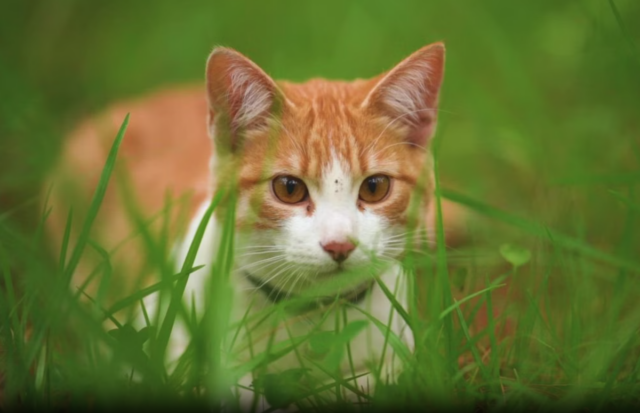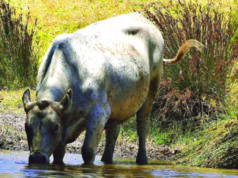Owners of ‘nuisance’ cats can now cop a $200 fine in the Shire of Serpentine Jarrahdale.
At its October 16 meeting, council voted to adopt the Proposed Cat Local Law 2023.
When the new law comes into effect, owners will require a permit to own more than two cats.
Under the previous SJ Shire law, residents were able to own three cats unpermitted.
But The Examiner understands that these new laws will not be applied retrospectively – only to owners who seek to newly acquire more than two cats.
A maximum number of six registered cats will still be allowed even with a permit.
A $200 fine applies to owners found without a relevant permit.
Owners of cats who create a nuisance of themselves by digging or defecating in neighbours’ yards, or caterwauling through the night can be fined $200 and given an ‘abatement notice’ which will need to be complied with for up to 28 days.
Cat owners found to be disregarding the abatement notice will be fined an additional $200.
Under the new law, cats will be banned from a list of prohibited bush areas around the SJ Shire, including Linton Street North and Brickwood Reserve in Byford, King Jarrah Circle, Chestnuts Estate and Woodland Plot in Jarrahdale, Lowlands Reserve in Mardella, and the Bush Forever Site 77 in Keysbrook.
A $200 fine will be issued to owners of cats found in these prohibited areas.
The proposed law stoked tensions within the community when it was advertised earlier this year; SJ Shire received over 70 impassioned submissions from people who were both vehemently for and against the new law.
All submissions were submitted anonymously online.
The greatest number of responses came from residents who believed the law was too lenient and that the shire should impose a curfew, or force cat owners to contain their pets within their property boundaries.
“I don’t think it goes far enough, and will have very little effect…all owners should have to keep their cat contained within their property. There is no excuse for cats to be roaming outside, dogs are not allowed to and neither should cats.”
“I would like SJ Shire to transition urgently to laws that include a cat curfew – where the cat must be confined to the owner’s property. Representation needs to be made to the state government to put in place laws across the state and the country to confine cats within their property. It’s better for the cats and better for Australia’s endangered wildlife,” one submission said.
“Cats should be banned but at least ban cats from leaving the owner’s property. I have so many cats come onto my property and kill wildlife and these new laws do nothing to address this shire-wide problem. It’s time to take our environment seriously as a council and make a grown-up decision to phase out cat ownership, not to encourage cat ownership as these laws do,” another said.
“I believe cats should have to be kept inside or in a cat run. I used to have guinea pigs loose on my vegetable patch to control weeds. I can no longer do this as the neighbours’ cats would stalk and kill my pets on my property. If I still had a dog and it did that it would be destroyed,” yet another said.
But council officers were at pains to point out they were hamstrung in implementing more stringent cat ownership laws by already existing state government laws.
“This proposed local law does not prohibit cats wandering outright, this cannot be implemented due to the Cat Act provisions that this local law is made under,” they said.
“A curfew on cats would not be legally able to be implemented in a cat local law.
“The shire can however implement prohibited areas. If the areas prohibited start to border on prohibiting cats from wandering, for example, if the shire list ‘every reserve’, the law may be made to be repealed by the Joint Standing Committee.”

But on the other side of the fence was a list of 14 submissions from residents and local cat breeders who objected to limits being placed on cat ownership.
“I support the proposed local laws however I feel cat breeders in the shire, if they meet the requirements listed including being on a suitable property and keeping the cats fully inside or enclosed, should be allowed 12 cats to maintain a healthy program and have the ability to request a higher number and have that number approved if it is reasonable,” one person suggested.
“I feel it’s important to have separation of cattery laws vs pet ownership. Responsible breeding should be recognised and monitored,” said another.
“I think more than two cats should be allowed as long as sterilised and indoor only.”
“You should not have to apply for a permit if you want to have more than two cats on your property. Especially if they are indoor or are contained to your yard. The rest of the nuisance laws seem fine to penalise people who let their cats roam and cause damage to the environment,” said another.
“I think restricting properties to two cats only is a little unfair especially if we are on acreage. I understand perhaps in suburbia but on larger properties I don’t agree with limiting us to two only,” said another resident.
And someone questioned: “What is the rationale for limiting cat numbers to two per house? A person with one cat can be an irresponsible owner just as much as a person with three or four can.”
And there were several people concerned that the limits would make it more difficult for people to foster cats, compounding the problem of strays in the community.
“You speak to any cat rescue organisation and they will tell you the massive problem they have with the number of cat surrenders from both the public and local government pounds. Limiting cat numbers so severely makes rehoming animals to good homes even tougher as you are adding an additional barrier to a home for a cat,” one person said.
“As a foster carer for a local cat rescue group, and also someone who actively traps stray cats within Byford around Coles and Caltex, I oppose the two cat per household rule. Not only does this affect me directly as a foster carer with two of my own permanent cats and an ever- changing rotation of fosters in a household I own, I can only see this meaning cats are disposed of and dumped within the community,” another explained.
Council officers explained that limits on cats already existed under the current laws and were there in consideration of the “health and wellbeing of the animals and the neighbouring residents”, but also appreciated the feedback from people concerned about the impacts on feline foster carers.
“Officers are thankful you have raised this with the shire, as the shire can implement an exemption on the payment for a permit for three to six cats where the cat is subject to foster care…Officers note that a permit would still be required, but the shire should be able to remove the payment requirement for foster groups, hopefully assisting with the fostering of cats prior to finding their forever home.”
They also said that approved breeders are permitted to own up to twelve unsterilised cats on a property zoned Rural or Rural Smallholdings.
A couple of people said a ‘carrot’ rather than ‘stick’ approach might be better to encourage compliance, and suggested the shire offer subsidies to residents to build a cat run on their property.
But officers curtly dismissed that idea:
“The cost of owning a pet should remain with a person who chooses to own a pet and not cost the greater community and ratepayers.”
The proposed laws attracted a similarly impassioned debate on the council floor, with former Cr Dean Strautins stating he believed the proposed laws were inadequate and that the shire would be better placed to advocate for its unique landscape and wildlife by fighting for change in the existing state-based Cat Act.
Ultimately the new law was adopted after a vote of 5:3.














